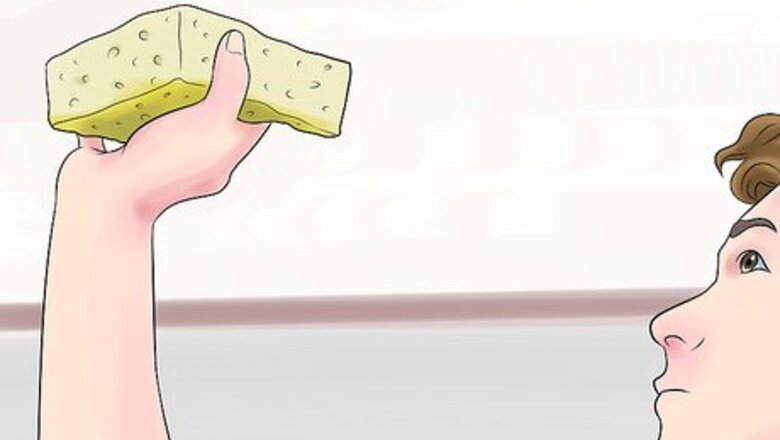
views
Preparing to Lay Tiles
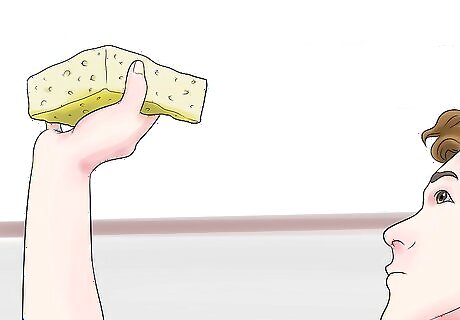
Clean the ceiling. If the ceiling isn't very dirty, simply use a broom covered with a tee-shirt to dust away any dirt. If your ceiling is dirty or greasy, use a sponge to scrub one small section at a time using an all-purpose cleaner. It's important to let the ceiling dry thoroughly before applying your tiles. A clean surface will make your tiles stick more effectively. You may have trouble attaching them if the ceiling is dirty or has peeling paint. If your ceiling is very greasy, wash it using a mixture of 1 cup ammonia and half a gallon of water.
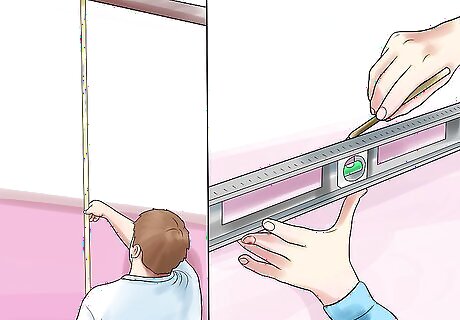
Measure the square footage of the room. To do this, use a measuring tape and record how long the ceiling is. Then measure how wide the ceiling is. Multiply these two numbers to get your square footage. For example, if your ceiling is 12' long and 15' wide, then the square footage is 180.
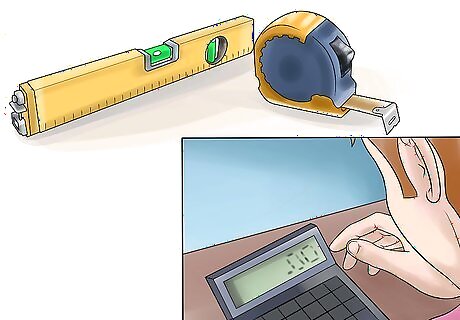
Determine how many tiles you need. You'll need to figure the square footage of each tile. Again, multiply the length times the width to get the tile's measurement. Then divide the square footage of the ceiling by the square footage of one tile. This will tell you how many tiles you'll need. For example, if your tile is 24" long and 24" wide (2' by 2'), then the square footage for the tile is 4 (2 multiplied by 2). If the square footage for your room is 180, divide it by 4. You'll need at least 45 tiles. Always buy 15 percent more tiles than you think you'll need. That way, if you need to cut tiles or make a mistake, you'll have plenty to complete the job.

Remove any fixtures or vents. Unscrew any light fixtures, fans, or air vent covers. This will allow you to easily measure tiles and install them without damaging fixtures. You'll probably want to use a flat-head or Phillips screwdriver to remove fixtures. This is also a good time to give fixtures and vents a quick clean.
Installing Tiles Directly on the Ceiling

Use chalk lines to find the center of the room. Measure halfway across each wall in opposite directions, using the length and width measurements you made for the ceiling. Have someone hold the chalk line or reel while you walk to the opposite end of the room. Snap the chalk against the ceiling. Rotate 90 degrees and do the same for the two opposite walls. For example, if your room was 12' long and 15' wide, you should measure 6' across the length of the room and 7.5' across the width of the room. When completed, you should have 2 straight lines that cross each other in the center of the room. This will be your starting point for laying tiles.
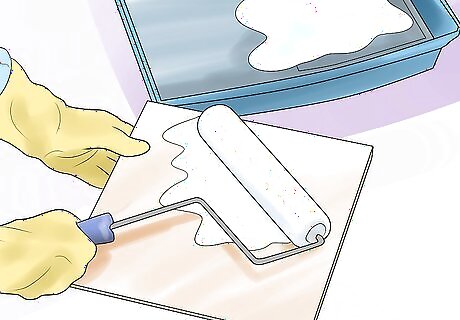
Apply cement or adhesive to your tiles. Use a foam brush or putty knife to spread adhesive on the back of your tiles. Spread adhesive to the four corners of the ceiling tile, about 1 inch (2.54 cm) from the edges and to the center of the tile. Check package instructions to determine the correct adhesive or cement for your tile material.
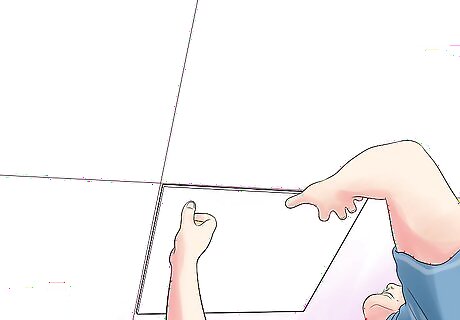
Apply whole tiles to the ceiling. Place your first tile in the center of the room, where the two chalk lines meet. Press it firmly against the ceiling, making sure it is level and aligned properly. Continue to place the tiles by working out from the center until you reach the other side of the room. Use the chalk lines as a guide.
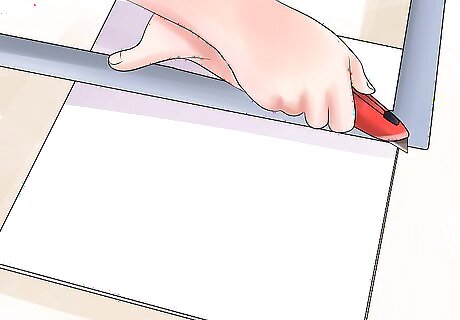
Cut tiles for fixtures. When you reach a fixture hole, measure the size and shape of the hole and locate where it will be on the ceiling tile you're preparing to place. Use those measurements to draw and cut the hole using a straightedge or scissors. Apply glue and place the tile on the ceiling where the fixture will be. Do a dry run and test your cut before adhering it to the ceiling. Simply hold your cut tile up over the hole, making sure the hole is completely visible. This way you'll be able to easily reinstall the fixture.
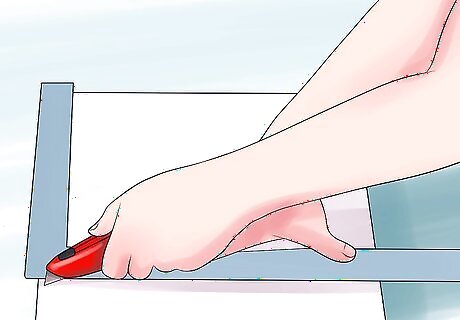
Measure and cut edge tiles. By the time you've almost completed tiling your ceiling, you may notice that you're near the edges and that the tiles will not entirely fit. You'll need to measure the exact size of tile for the edges. Then use a straight edge to cut the tile, apply glue, and press the edge tile against the ceiling. Repeat this around all the edges. Again, do a dry run and test your cut before adhering it to the ceiling. Simply hold your cut tile up on the ceiling against the edge. It should fit snugly, but not be too tight or difficult to apply.
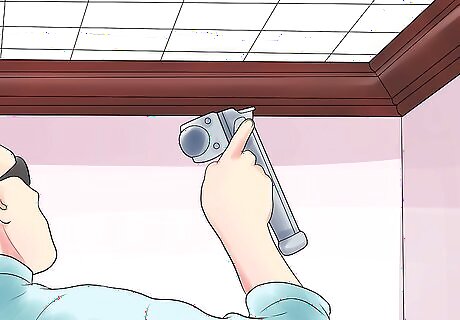
Attach molding to the borders, optional. If you choose to add borders to the edges of the ceiling, use a staple or nail gun and secure the molding to the wall. Fill the holes with wood filler and paint the molding. Molding can make your room look more polished or finished. It can also hide edges of tiles that have been cut.
Installing Ceiling Tiles with Furring Strips

Locate one of the joists. A joist is a length of timber or metal that provides structural support. It's easiest to use a stud finder to locate them in the ceiling. Mark the spot with a nail or chalk mark. You might want to start by checking for joists near lighting fixtures since they're often installed along joists.

Find the other joists. Measure 16 inches (40.64 cm) from the first joist and check for the presence of the next one. Joists are usually 16 inches to 24 inches (40.64 to 60.96 cm) apart, so you should find it close to those measurements. Mark a chalk line that shows the joists across the entire ceiling.

Install the furring strips. Furring strips are thin 1" by 3" strips of wood that you attach at a right angle to your joists so that they are flush against the wall. You simply staple a nail into the strip. Use a level and make sure that the furring strip is level. If not, add a shim underneath to make it level. Make sure that your furring strips are at even intervals and that they fall through the center of your tiles. You may want to hold up tiles for reference as you install the furring strips.
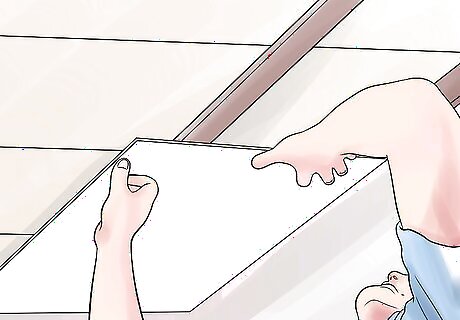
Apply the first tile in the corner. Snap a chalk line down the center of the first strip closest to the wall. Align the corner tile with the line and the wall, then staple it to the furring strip, using at least 2 staples along the sides and 1 in each corner. Continue placing edge tiles.
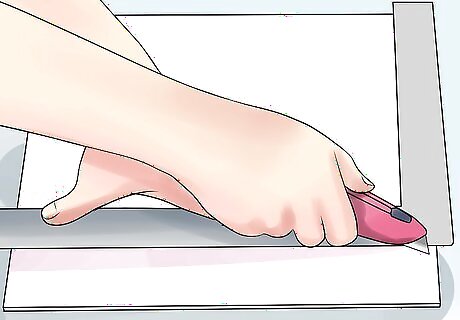
Staple the tiles across the ceiling.Once you've stapled the edge tiles, work your way across the ceiling filling in with whole tiles. You may need to use a straight edge to cut a tile to fit around a fixture. When you reach a fixture hole, measure the size and shape of the hole and locate where it will be on the ceiling tile you're preparing to place. Use those measurements to draw and cut the hole.
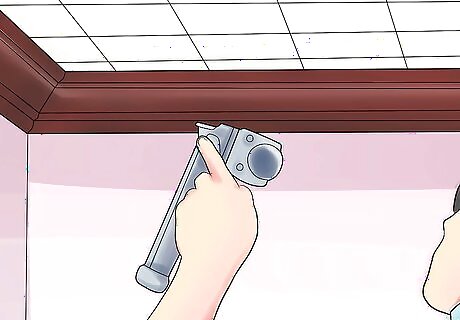
Attach molding to the borders, optional. If you choose to add borders to the edges of the ceiling, use a staple or nail gun and secure the molding to the wall. Fill the holes with wood filler and paint the molding. Molding can make your room look more polished or finished. It can also hide edges of tiles that have been cut.




















Comments
0 comment